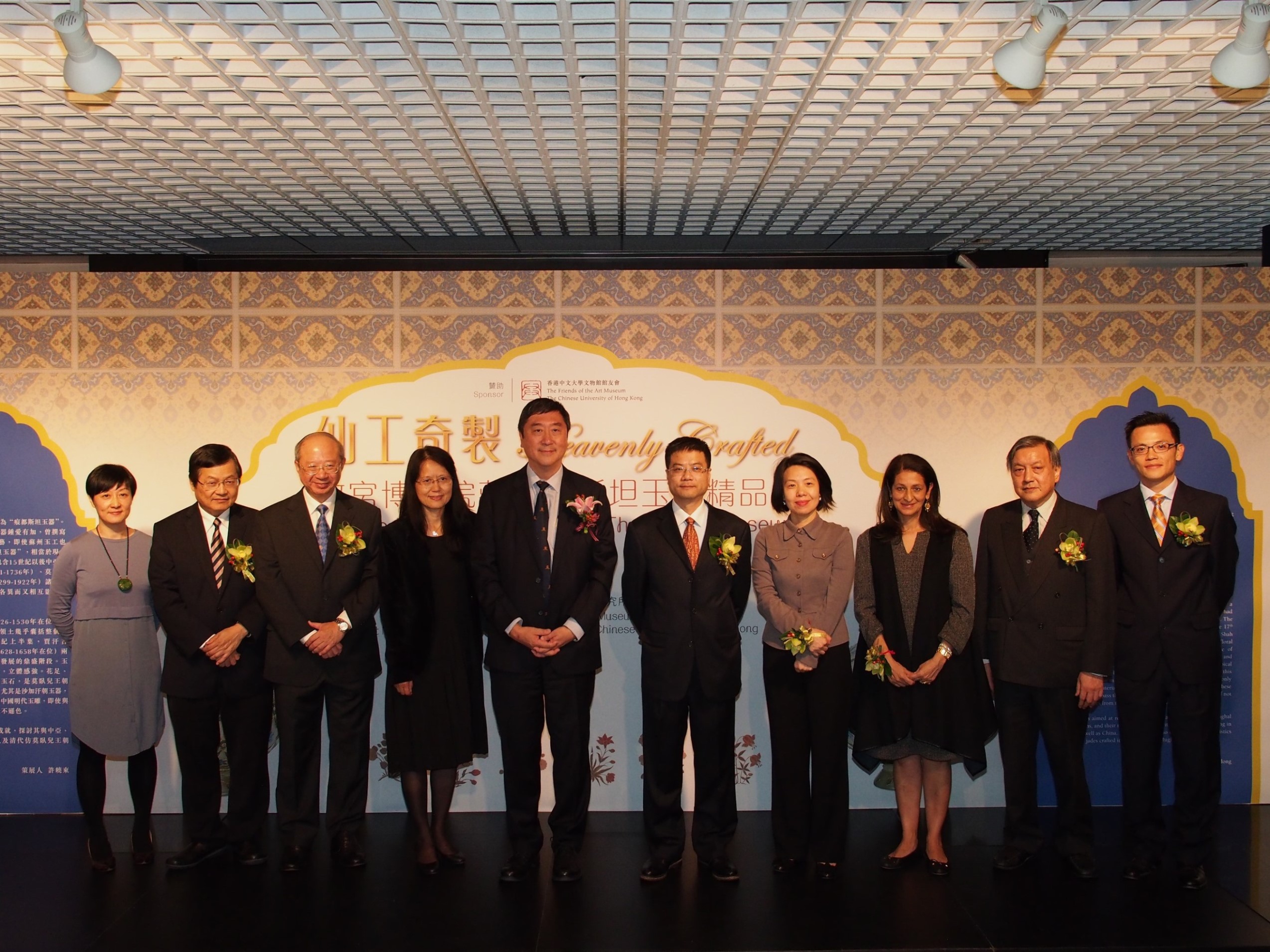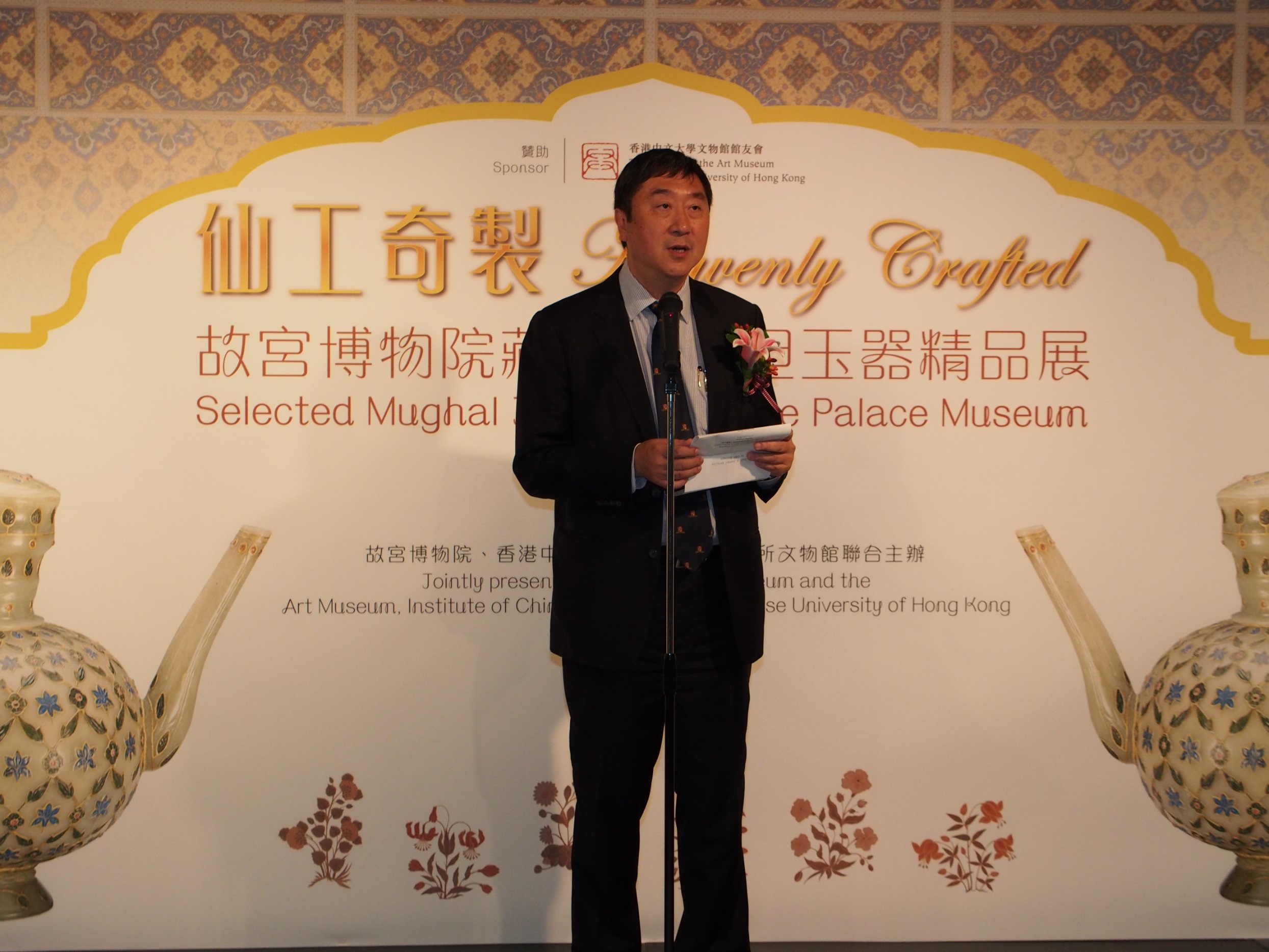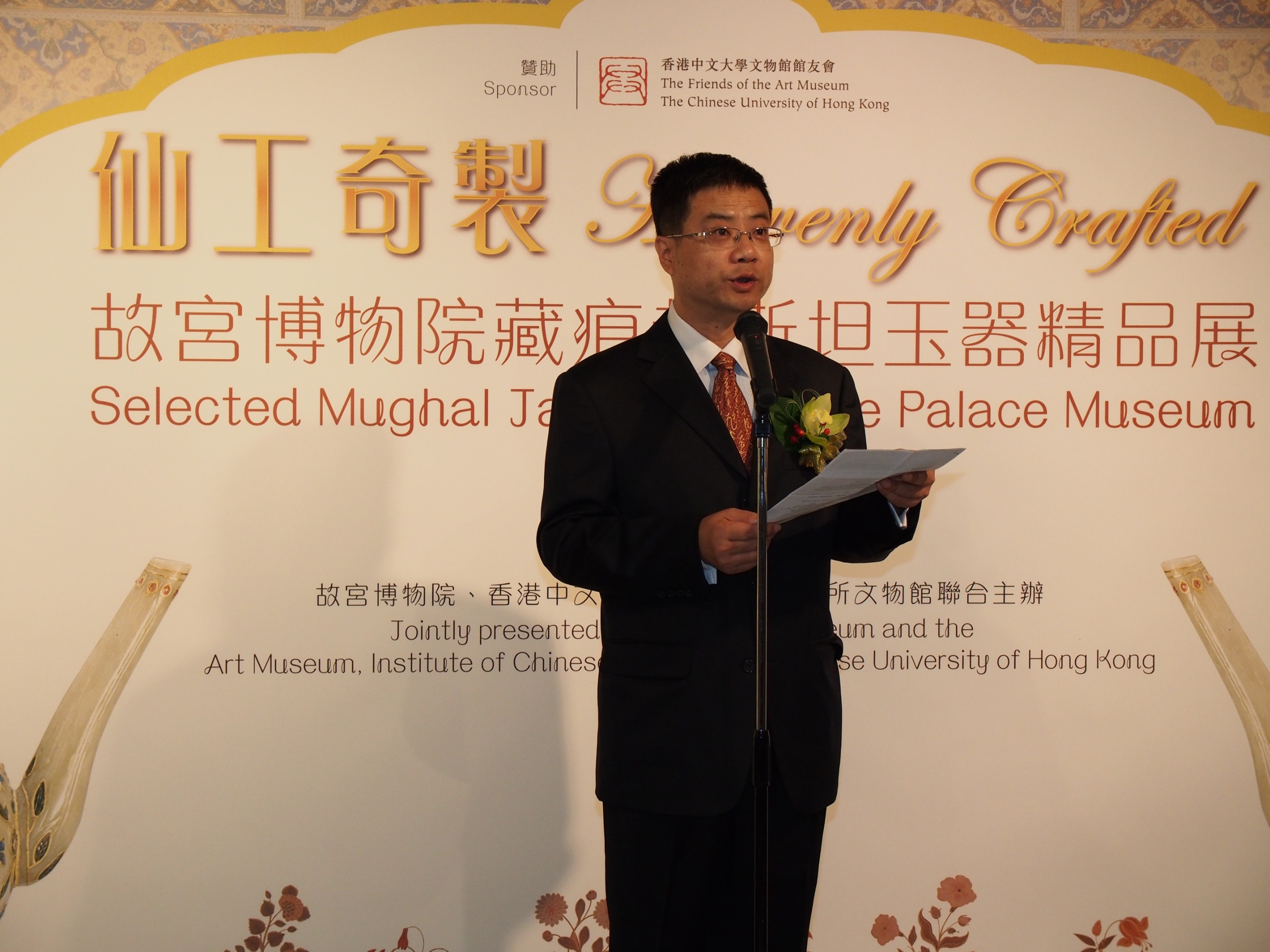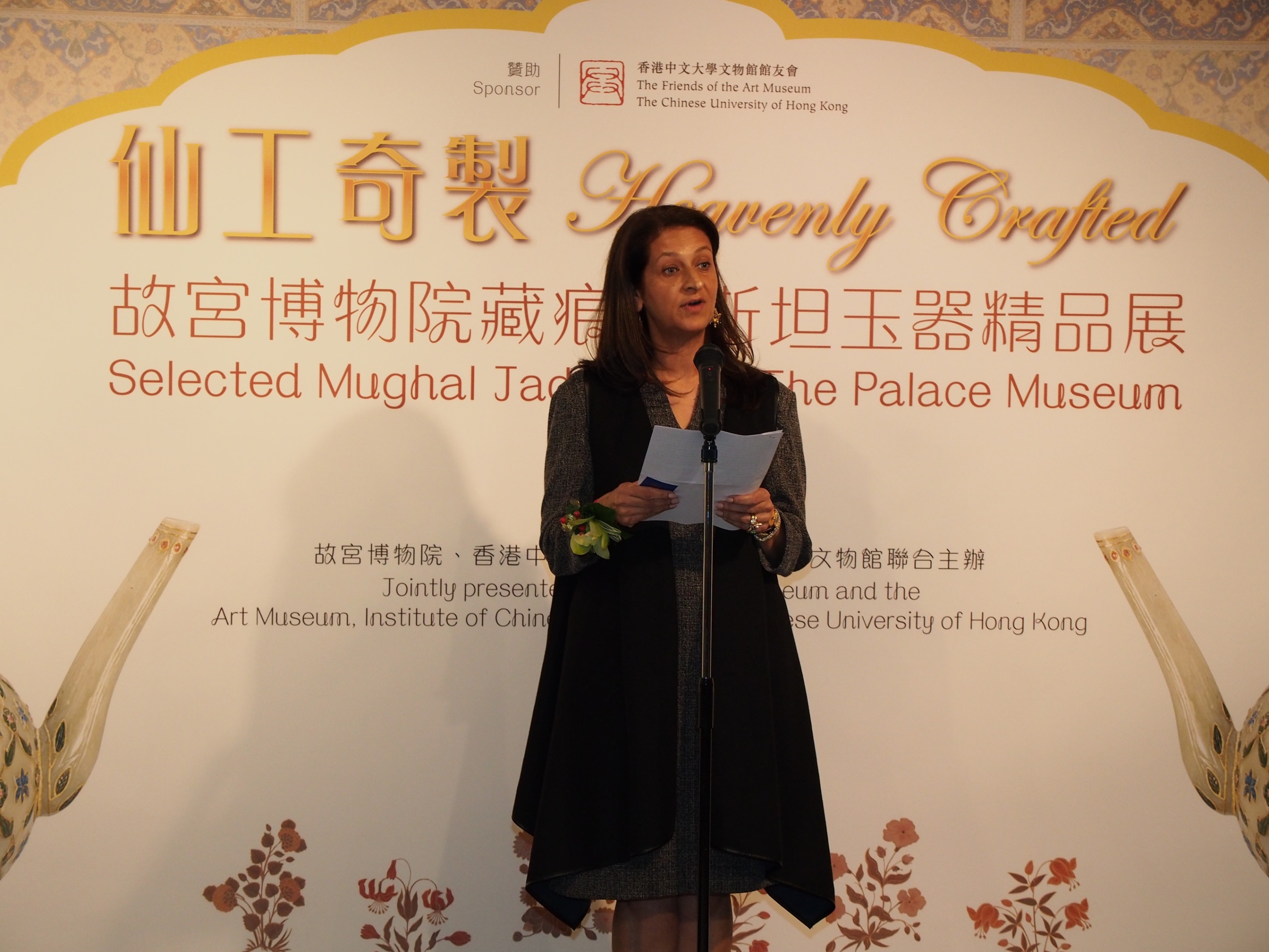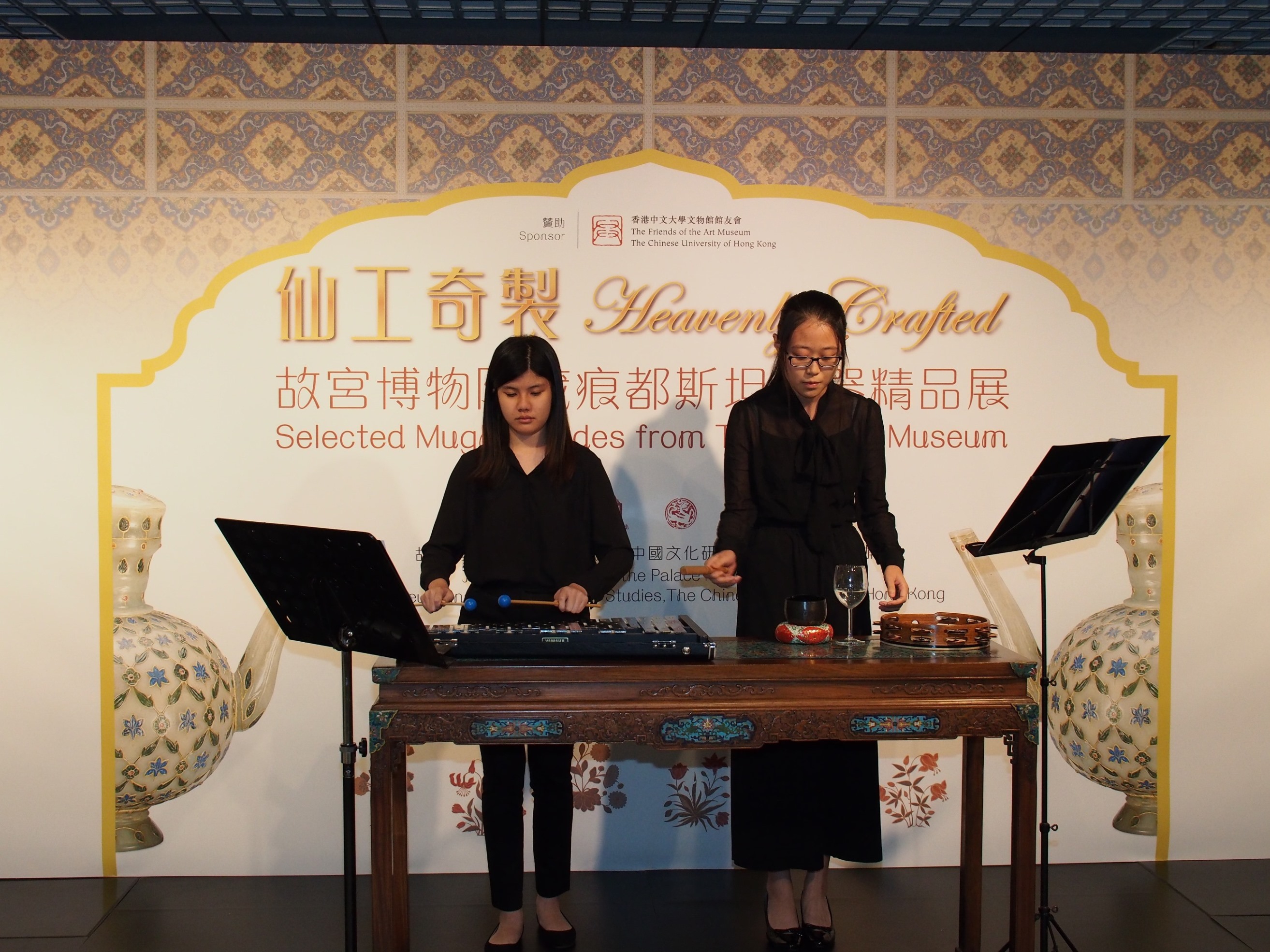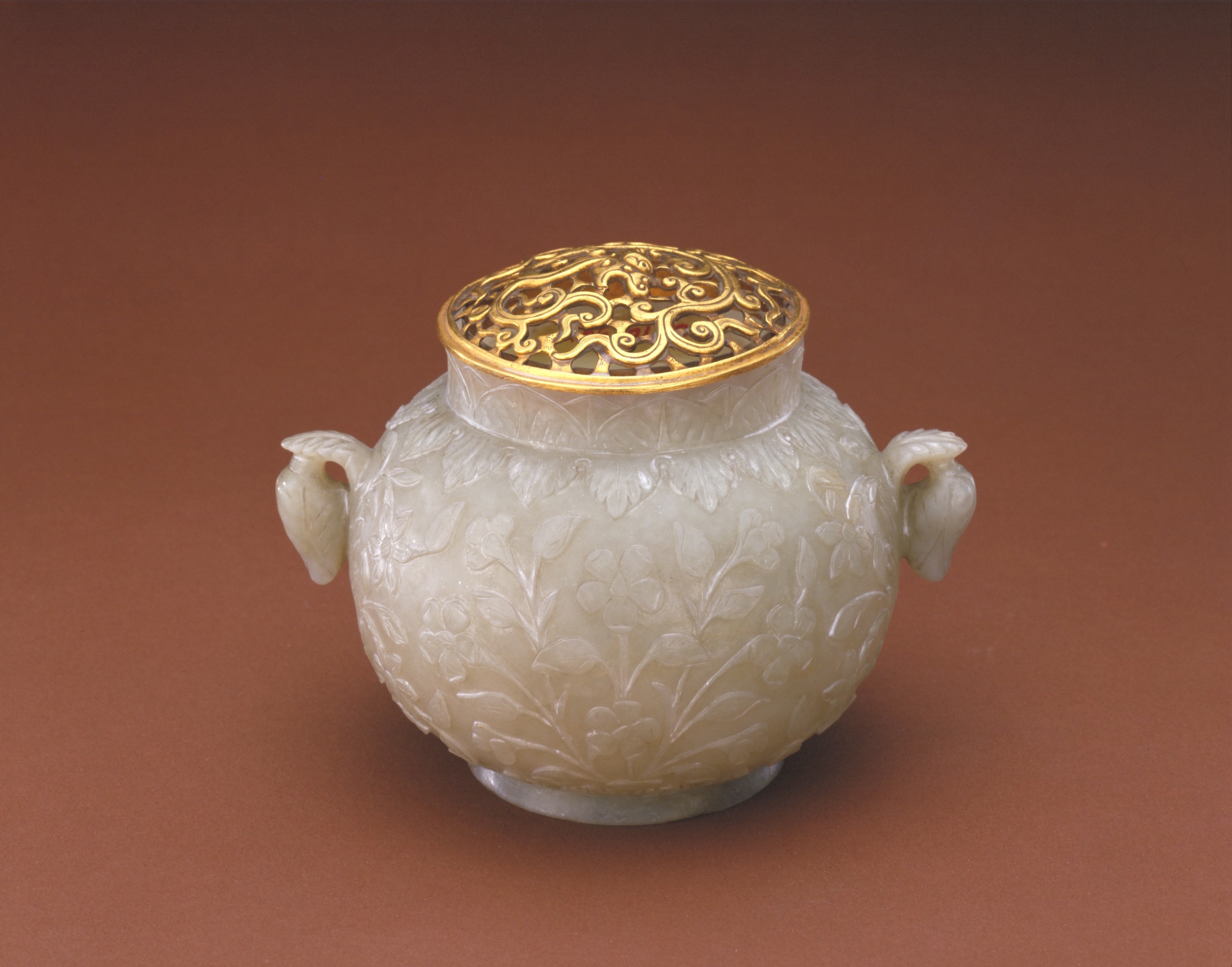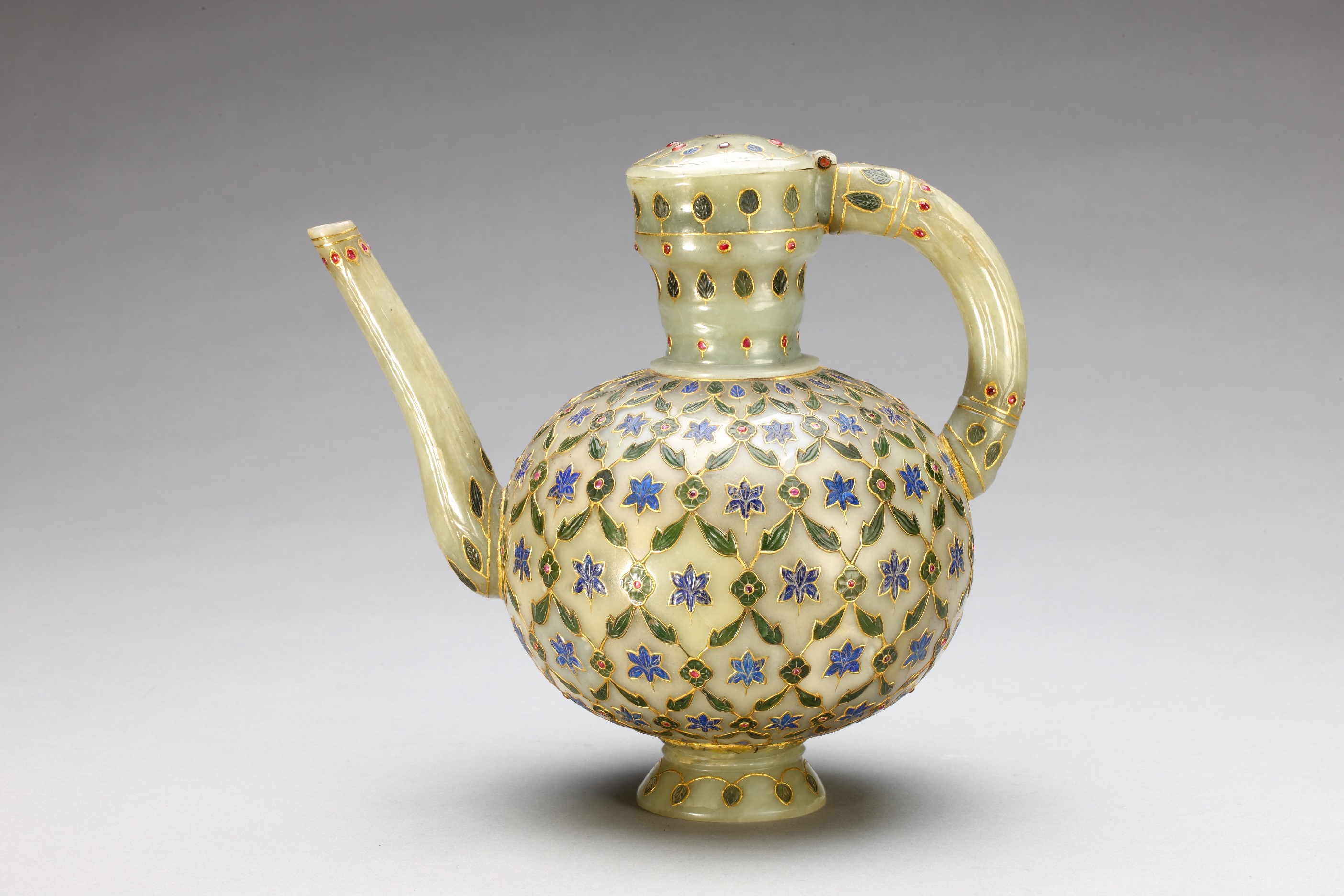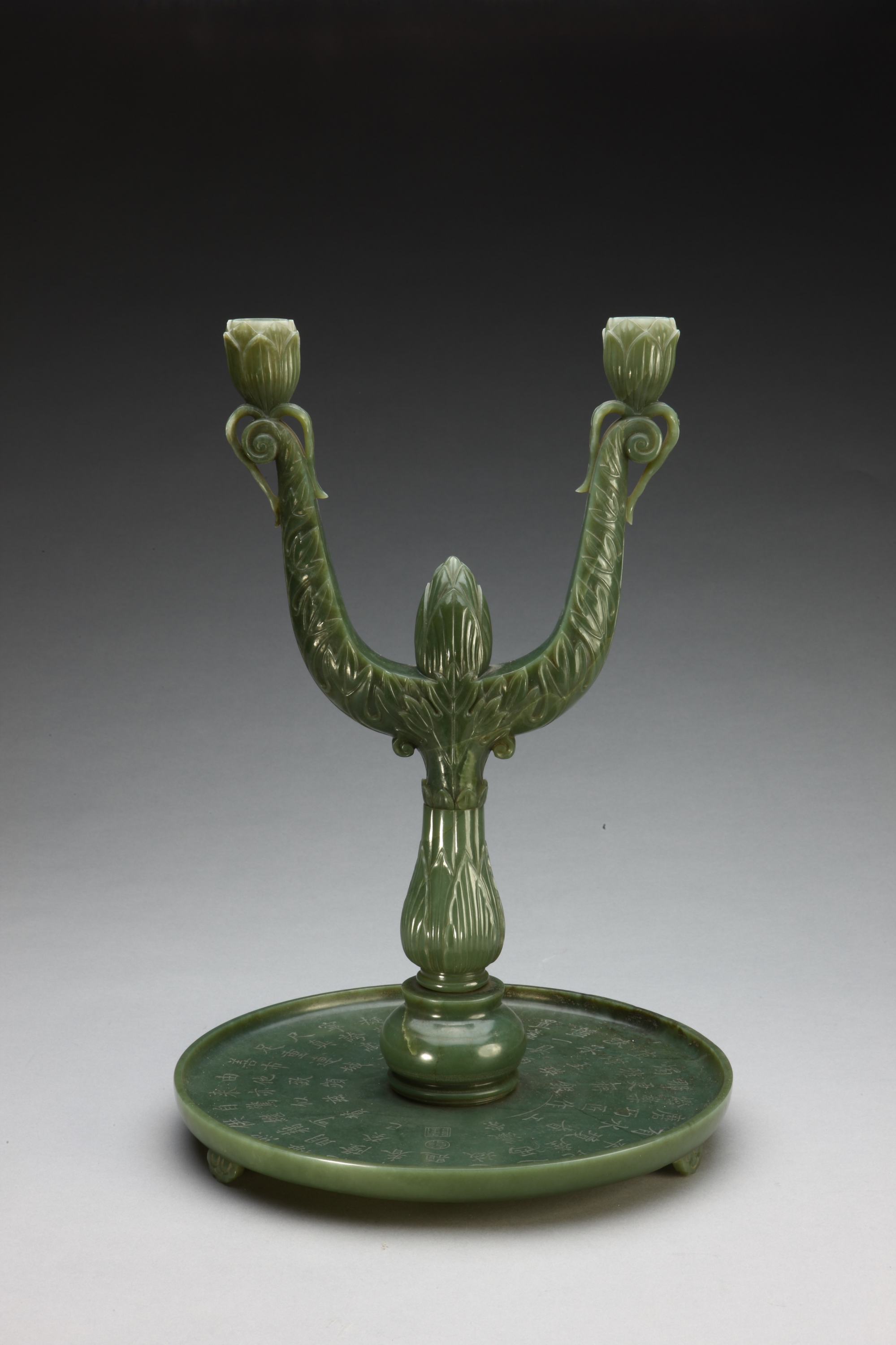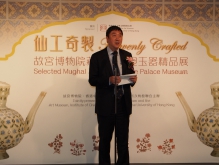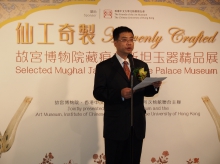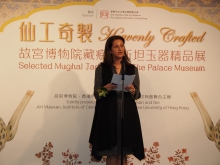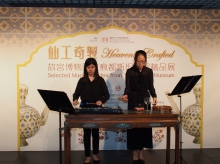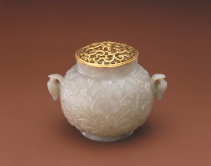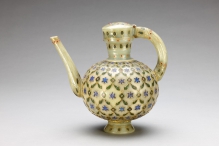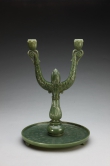CUHK
News Centre
Exotic and Splendid Jades from the Palace Museum Exhibited for the First time in CUHK
The Art Museum of The Chinese University of Hong Kong (CUHK) and The Palace Museum, Beijing will jointly present the exhibition ‘Heavenly Crafted: Selected Mughal Jades from the Palace Museum’ from 28 November 2015 to 28 February 2016. Thanks to the generous sponsorship of the Friends of the Art Museum, CUHK, 40 extraordinary pieces out of 500 Mughal jades have been borrowed from the Palace Museum collection by the Art Museum. Most of the pieces have never been exhibited before, even in mainland China, and this Hong Kong exhibition is their first appearance.
The opening ceremony of the exhibition was held today (27 Nov). The officiating guests included Mr. Feng Naien, Deputy Director, The Palace Museum; Prof. Joseph Sung, Vice-Chancellor and President, CUHK; Ms. Peng Jie, Director, Department of Publicity, Cultural and Sports Affairs, Liaison Office of the Central People’s Government in the HKSAR; Mrs. Rebecca Sung, Patron, Friends of the Art Museum, CUHK; Ms. Sagiri Dayal, Chair, Friends of the Art Museum, CUHK; Prof. Michael Hui, Pro-Vice-Chancellor and Vice-President, CUHK; Mr. Christopher Mok, Chairman, Advisory Committee, Art Museum, CUHK; Prof. Leung Yuen-sang, Director, Institute of Chinese Studies, CUHK; Prof. Josh Yiu, Acting Director, Art Museum, CUHK; and Prof. Xu Xiaodong, Associate Director, Art Museum, CUHK.
The unique collection of jade wares in the Qing palace is referred to in contemporary documents as ‘Hindustan jades’, which is more or less equivalent to ‘Islamic jades’ in Western scholarship. It includes jade wares from the 15th century onwards, produced in Central Asia during the Timurid Empire (1370–1507), the Safavid Empire (1501–1736), the Mughal Empire (1526–1857), and the Ottoman Empire (1299–1922), among which the most splendid are the Mughal jades from India. In the eighteenth century, large quantities of exquisite Mughal jades, varying from organic to geometric forms, were imported for the Qing court. The meticulously carved Mughal jades were primarily utensils such as bowls, plates, and goblets. The Qianlong emperor was enamoured of this type of object, to the extent that he composed dozens of poems about them. The exhibits of ‘Heavenly Crafted: Selected Mughal Jades from the Palace Museum’ comprise mainly Indian Mughal jades of the seventeenth and eighteenth centuries, in addition to a few Central Asia jades and Qing copies, which together reflect the cultural and artistic exchanges between the Qing court and the Western Regions. Members of the public are welcome to visit the exhibition. Admission is free.
CUHK and the Palace Museum in Beijing signed a Memorandum of Understanding for a 5-year framework on cooperation in 2014, and this is the first project under the cooperation framework of the two institutions. At the same time, this is also a new attempt by the two institutions to organize a small research-oriented exhibition. A scholarly catalogue will be published accompanying the exhibition and a series of education programmes will be held, including seminars, lecture series, workshops and demonstrations of Indian jade craft. This will provide an excellent opportunity for the public to learn about the Mughal jades.
Details of the exhibition are as follows:
| Exhibition Period: | 28 November 2015 to 28 February 2016 |
| Exhibition Venue: | Gallery II, Art Museum, Institute of Chinese Studies, CUHK |
| Opening Hours: | Mondays to Wednesdays, Fridays and Saturdays: 10:00am-5:00pm Sundays and Public Holidays: 1:00pm-5:00pm |
| Closed: | Thursdays, Christmas Holidays, New Year Holidays, Lunar New Year Holidays |
| Enquiries: | 3943-7416 |
(From left) Prof. Xu Xiaodong, Associate Director, Art Museum, CUHK; Prof. Leung Yuen-sang, Director of the Institute of Chinese Studies, CUHK; Prof. Michael Hui, Pro-Vice-Chancellor and Vice-President, CUHK; Mrs. Rebecca Sung, Patron, Friends of the Art Museum, CUHK; Prof. Joseph Sung, Vice-Chancellor and President, CUHK; Mr. Feng Naien, Deputy Director, The Palace Museum; Ms. Peng Jie, Director, Department of Publicity, Cultural and Sports Affairs, Liaison Office of the Central People’s Government in the HKSAR; Ms. Sagiri Dayal, Chair, Friends of the Art Museum, CUHK; Mr. Christopher Mok, Chairman of Advisory Committee of the Art Museum, CUHK; Prof. Josh Yiu, Acting Director of the Art Museum, CUHK officiate at the ribbon-cutting ceremony for the exhibition.
Jar with Bud-shaped Handles India, 17th- early 18th century Height 7.9cm, diameter of mouth 6.7cm, diameter of base 5.9cm
One-Handled Jug Inlaid with Gold and Precious Stones India, 18th century Height 25cm, diameter of mouth 6.7cm, diameter of base 7.2cm


